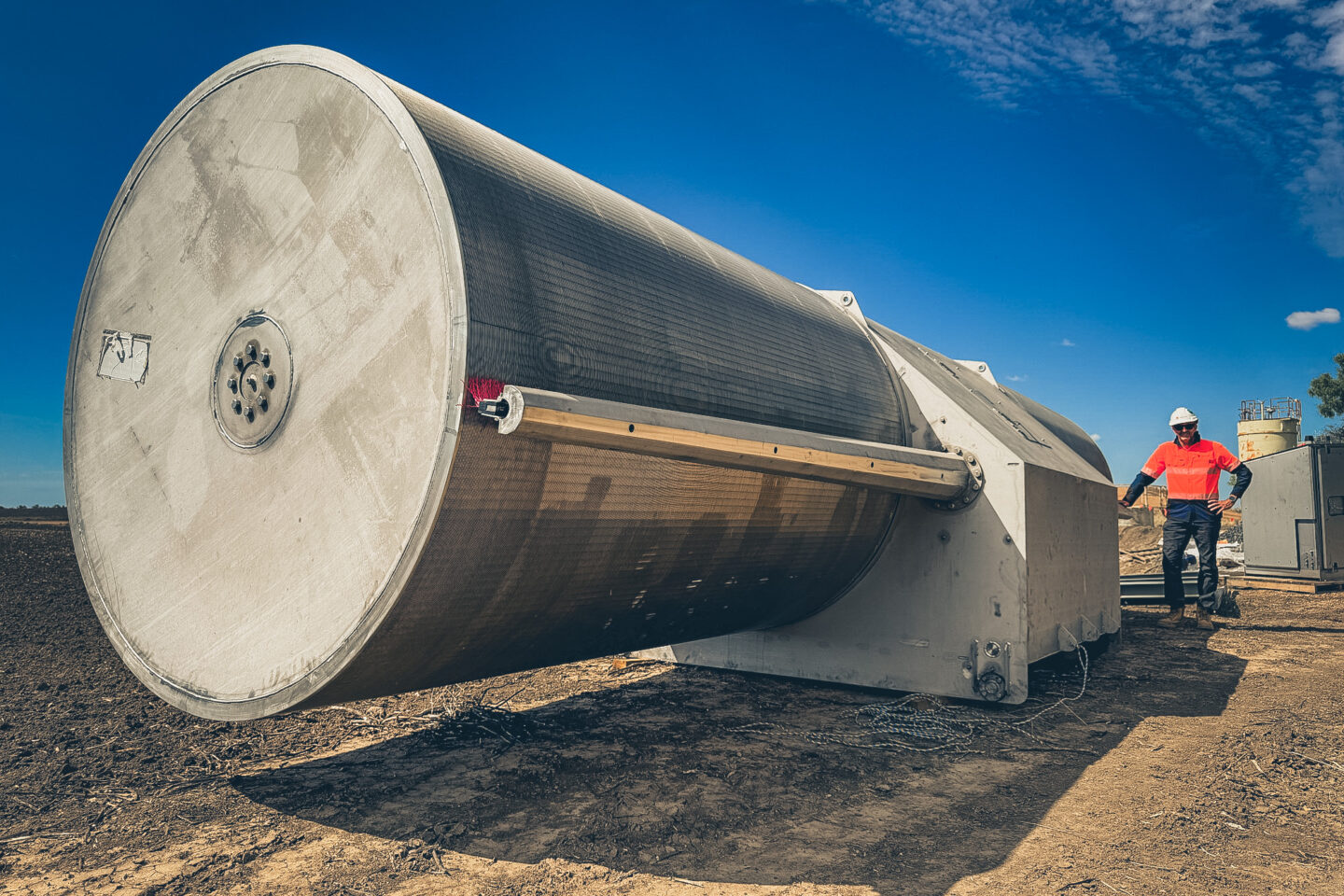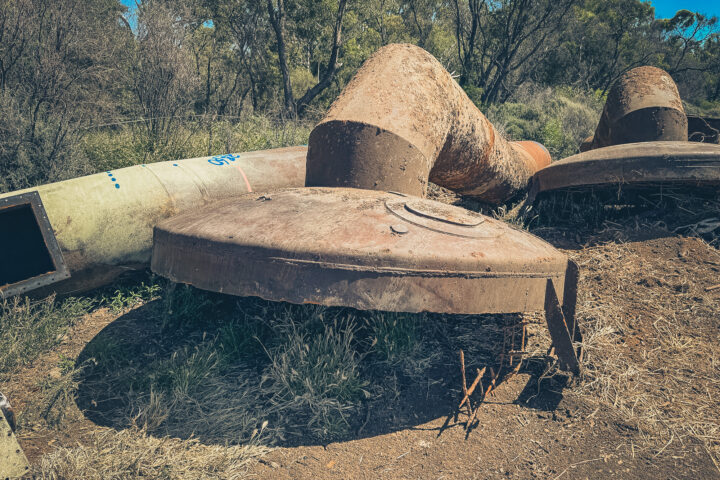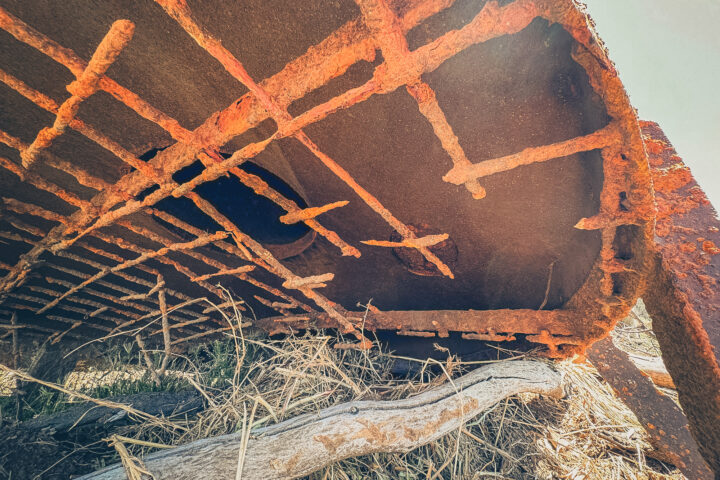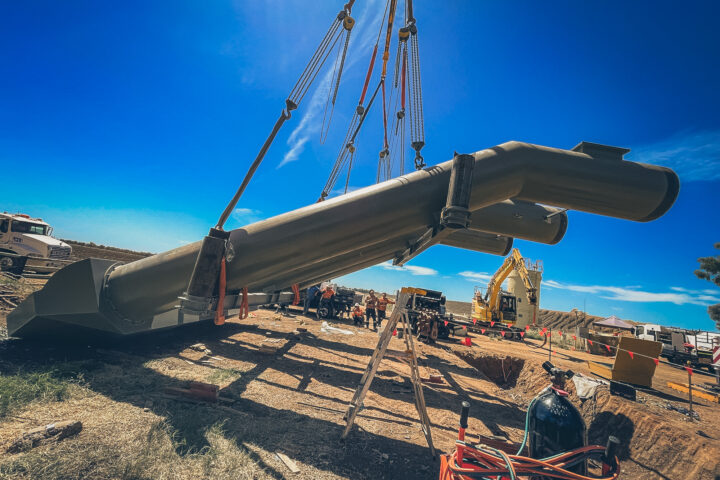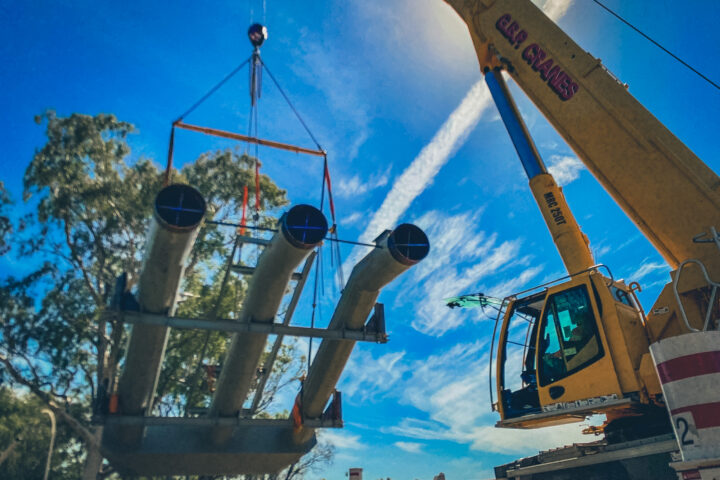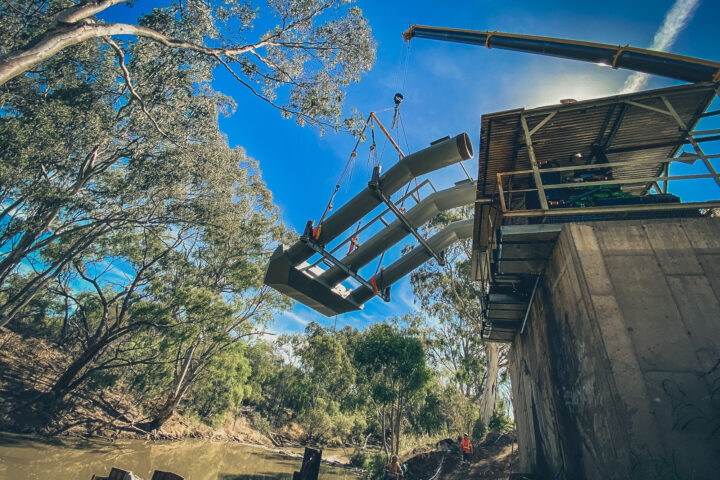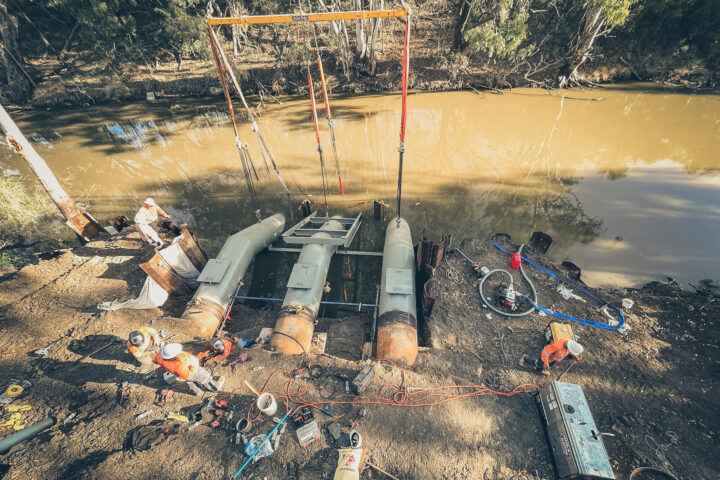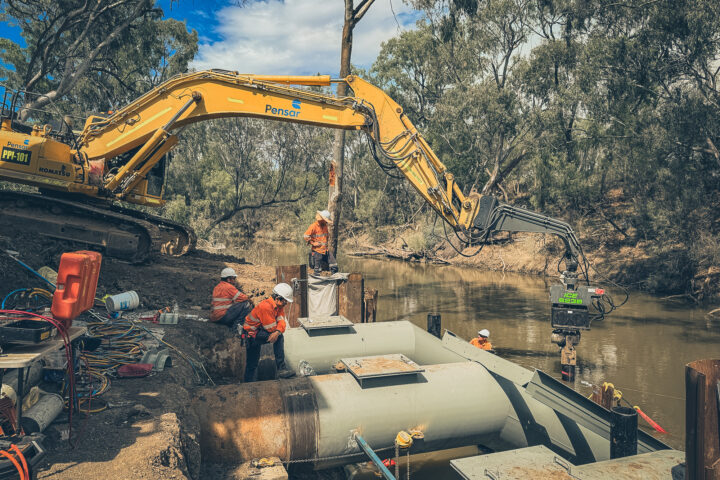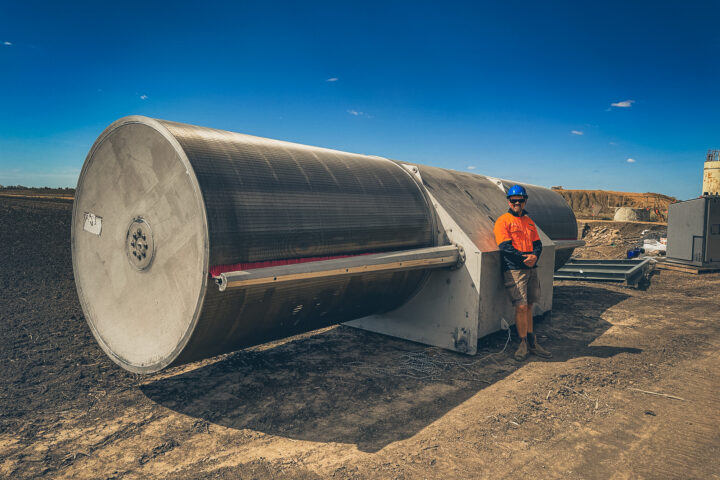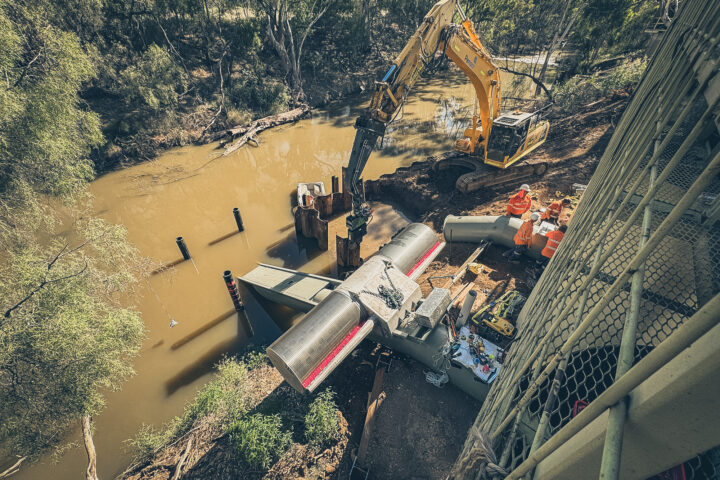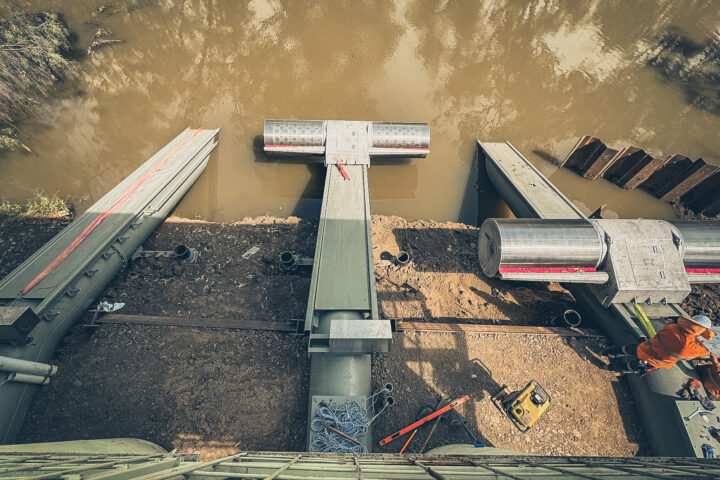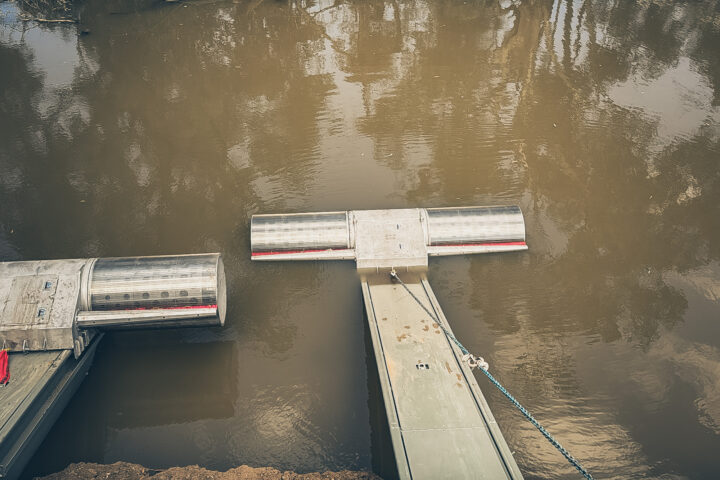Sundown Pastoral Company uses highly-efficient, sustainable farming practices – including modern fish screens.
The fish screens on their Wathagar property demonstrate a real commitment to environmental stewardship and the evolution of agriculture.
Big screens
Australia’s largest fish-protection screen (as at August 2025) has been installed as part of a screening array now in place at Wathagar, on the Mehi River near Moree, NSW.
The installation was completed in May 2025 and includes four AWMA T-screens that keep native fish in the river and prevent debris from impacting Wathagar’s six irrigation pumps.
The largest of the Wathagar screens measures an impressive 1.8 metres in diameter and almost 8 metres in length, accommodating a screen surface area of over 30 metres squared.
The screens are fitted to rails on the pump pipelines. This allows them to be automatically retracted for convenient inspection and easy maintenance.
Same volume, lower velocity
Sizing fish-protection screens appropriately is the key to their performance!
- A large surface area ensures flow volume of water passing through the pumps is maintained or even improved.
- This larger surface area reduces the speed of water flowing towards the intake. It reduces the velocity of water at the screen face to less than 0.1 m/s.
The reduced water velocities mean debris and fish are less likely to be drawn towards the pump. If material does accumulate, it will be removed by the automated cleaning brushes that are set on a timer to operate once or twice a day.
Big benefits
Site owner Sundown Pastoral Co. is looking forward to cleaner water for the 2026 summer growing season.
The on-farm and public benefits will flow for at least 50 years – the lifespan of the infrastructure.
Less debris means more consistent water delivery, which is essential for maintaining crops through their growing season – and getting water where it’s needed when it’s needed.
Native fish can move freely and safely along this section of the Mehi River. That means more native fish in the river, to breed the next generations for biodiversity and fishing.
